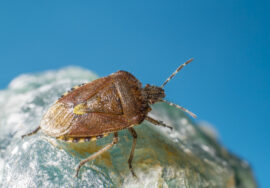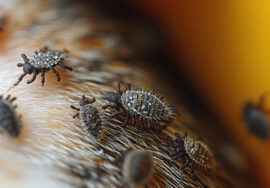Pest Control Services in Oshawa: F-Ant-tastic Facts: A Crash Course in Ant Biology
Ants are the most successful (!) insects on Earth. Other than Antarctica, they have invaded every continent and can be a real pain wherever they may go, whether it’s your garden, sandwiches, or wall. However, while controlling them productively is important (who wants ants in their food, after all? ), it’s the science—the quirky and peculiar aspects of ant biology—that will help you figure out how to tackle them effectively. So, let’s dive into the ant universe with Pestbye Pest Control, a leading homegrown provider of pest control services in Oshawa!
Super Societies
Inside all these ants is an impeccable work ethic. And that’s the remarkable thing about ants—because they’re eusocial insects, the term that refers to insect species that live in highly organized colonies. Many of these colonies have tens of thousands of insects in them; some have millions, and they’re all working together as an integrated superorganism.
The colony has a few individuals who are highly reproductive—they’re the colony’s mothers, and they’re females, and typically only one of them per colony will be reproductively active, as that’s as many as the colony needs.
There will also be a bunch of non-reproductive females—they’re the workers, and they all go out and do stuff, like hunt food, clean the nest, and take care of the young—and are pretty much the police force and army as well. This cooperative lifestyle gives them a major evolutionary benefit.
Ant Architecture
Some species are known for creating elaborate subterranean nest structures, often equipped with many chambers and passages. Carpenter ants bore into wood to nest, while leafcutter ants construct huge underground cities populated by up to eight million inhabitants! The structures allow ants to create controlled microclimates for the brood, as well as nurseries, food storage, and other uses.
Mighty Yet Tiny
Are you looking for a renowned company that specializes in ant extermination in Ajax? Small though they are, with bodies around a millimetre across, ants are remarkably strong and enduring. They can lift loads twenty times their body weight, exert forces of up to five thousand times their body weight per unit mass (compared with a top-class invitational athlete bench-pressing around a hundred times their body weight per unit mass), and tolerate unusually extreme conditions of water and oxygen deprivation, living in the ultimate austere environment.
Expert Chemists
Ants communicate largely through chemicals, or pheromones. Pheromones are used to trail food, identify nestmates, and alert other ants of danger. Some ant species actually farm fungi or other microbes that exude chemicals used by the colony. Ant chemical ecology can give clues into how to interrupt communications or attractants that could be exploited for control.
Food for thought
While most ants are omnivores, feeding on various plant and animal matter—not to mention sap from farming plant pests such as aphids—some species are also very specialized, with predaceous specialists such as army ants literally eating other insects by the hundreds. Ants’ flexible foraging strategies, along with their phenomenal sense of smell, help them detect many different potential food sources. If you know which foods certain species prefer, it can make it easier to select the best baits for your target species.
Sowing the Seeds of Success
Are you searching for an established business with a record of accomplishment in ant extermination in Ajax? Ants also perform important ecological functions as engineers, seed dispersers, and ecosystem clean-up crews and can be mutually beneficial to plants (a few species help the plants disperse their seeds!). Harvester ants, for instance, preserve seeds and can later germinate them near their nest, which suggests symbiotic relations between ants and plants. Symbiotic relationships can offer clues regarding how ant behaviour can be manipulated or impacts can be minimized.
Ever-Evolving Survival
Ants arrived more than a hundred million years ago, and they have since evolved through a multitude of physical forms and behaviours to thrive. Some species, such as the raft-forming fire ants, can survive floods by joining leaves together. Others, known as slaver ants, take over other colonies using attacks as classic as the story of ten slaves stealing their master’s cattle and pillaging his home.
With so many ways to exploit resilient colonies, life’s samurais can thrive in a wide range of ecological niches and continue evolving when environments shift in the face of massive human impacts on ecosystems and rapid changes in temperature, pressure, and carbon dioxide. Learning from their adaptations could inform more intelligent, evolving control measures as we grapple to stay ahead of these relentless insects. Call us now to learn about our pest control services in Oshawa!








